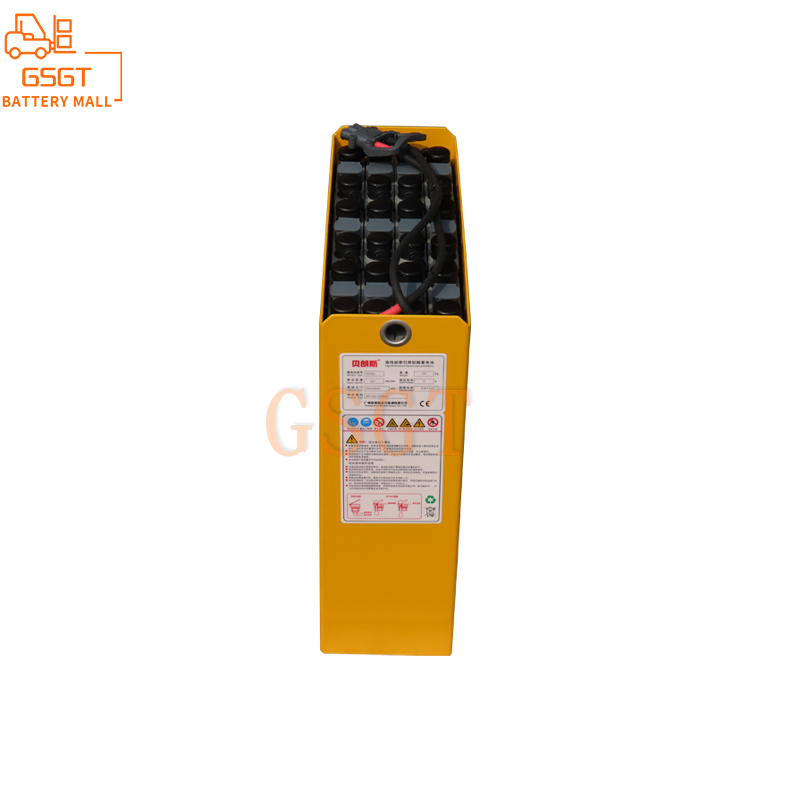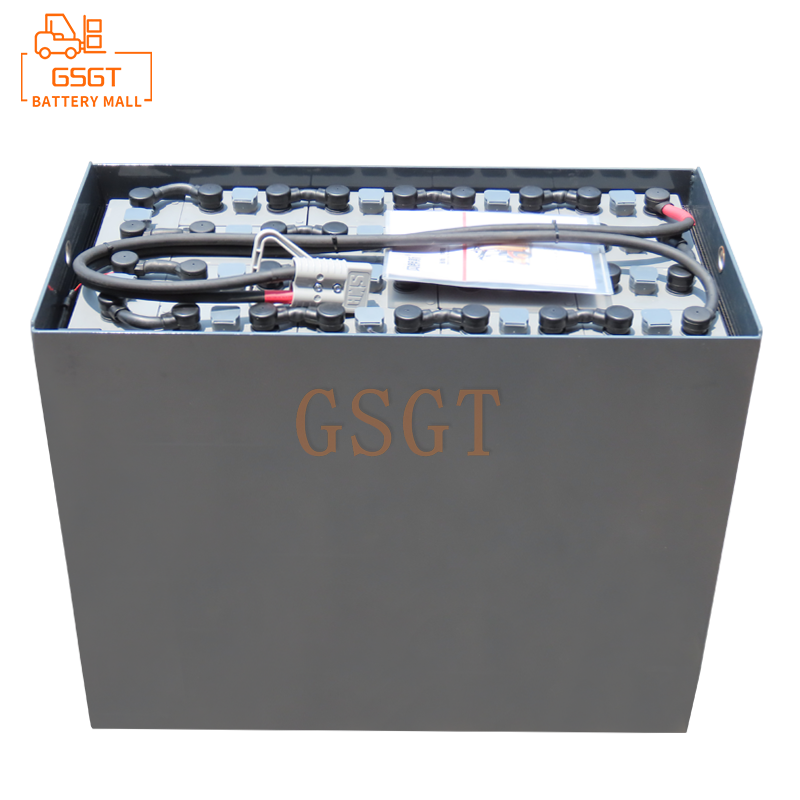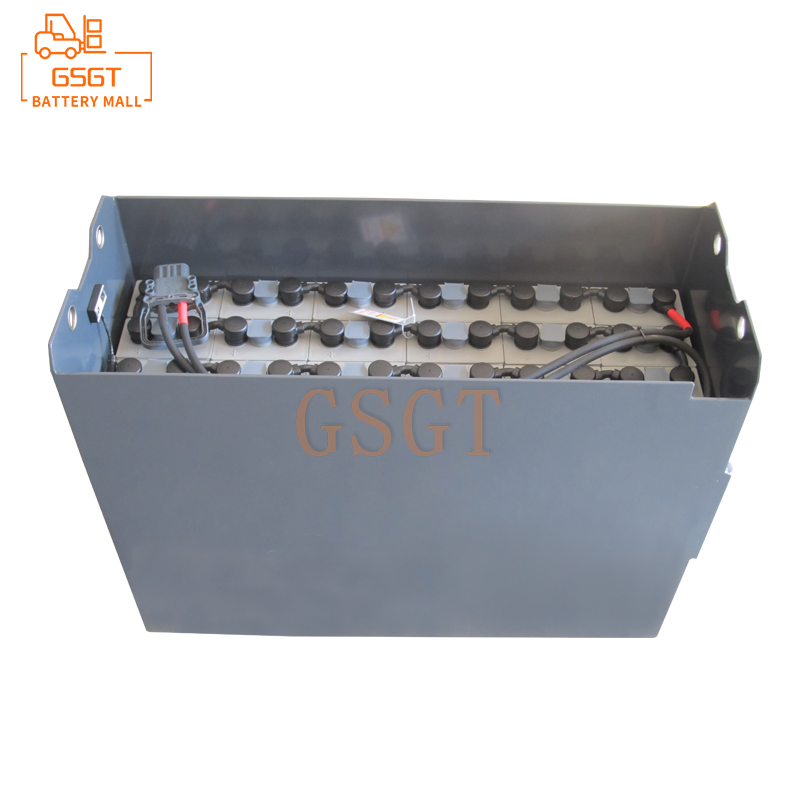Time:2025-04-10 10:01:36
Browse:627
Introduction
In modern industry and logistics system, forklift is the core equipment of material handling. Its power source performance directly affects operation efficiency and operating costs. Lead-acid batteries have long dominated the field of forklift power with mature technology, user-friendly cost and reliable safety. However, the tide of science and technology is surging forward, the market is increasingly calling for efficient, environmental protection and sustainable development, and forklift lead-acid battery technology is also continuing to innovate. It is of great significance to the forklift industry and related enterprises to gain insight into its latest progress and application prospects.
Combing the traditional characteristics of lead-acid batteries
◆Energy density limitation
The energy density of lead-acid batteries is not high, usually 30-50Wh/kg. This means that to store the same amount of energy, it is larger in weight and volume. Forklifts equipped with such batteries, the payload and internal space utilization will be limited, like carrying a heavy burden, flexibility is greatly reduced.
◆Short board of charge-discharge characteristics
Charging takes a long time, usually 8-10 hours to full. In high-intensity operation scenarios of forklift trucks, long charging leads to downtime, which seriously affects work efficiency. When discharging, if there is a large current demand, the battery voltage will drop rapidly, and the capacity utilization rate will decrease accordingly, just like a sprinter lacking momentum.
◆Maintenance work is cumbersome
Daily maintenance to regularly check the electrolyte level, timely supplement distilled water, but also always monitor the battery voltage, specific gravity and other parameters, maintenance process is cumbersome, time-consuming manpower and time.
Cutting-edge technological innovation
◆Innovative breakthroughs on the material side
●plate material upgrade
A new lead alloy was developed for plate manufacturing. Adding calcium, tin, silver and other trace elements to the lead can enhance the corrosion resistance of the plate, reduce the self-discharge phenomenon, and significantly extend the battery life. For example, advanced lead-calcium alloy plates can increase the battery cycle life far beyond the traditional plate.
●electrolyte additive optimization
By adding special additives, such as stannous sulfate and graphene quantum dots, the electrical conductivity and electrochemical activity of the electrolyte can be improved. Stannous sulfate can inhibit negative plate vulcanization, and graphene quantum dots can enhance ion transport capacity, improve charge and discharge efficiency and low temperature performance. At low temperatures, the capacity retention rate of the battery with appropriate additives is about 20% higher than that of the traditional battery.
◆Structural design optimization measures
●High porosity diaphragm applications
New high porosity partitions, such as high performance glass fiber partitions, have a porosity of more than 90%. It can reduce electrolyte resistance, speed up ion transfer, and prevent plate short circuit, improve battery performance and safety.
●thin plate design ideas
Under the premise of ensuring strength, reduce plate thickness. The thin plate increases the surface area and allows the active substance to contact the electrolyte more fully, thus improving the charge-discharge rate performance. The high current discharge capacity of the forklift lead-acid battery with this design can be increased by 30%-40%.
Deep integration of intelligent management system
◆Upgrade the battery management system (BMS)
Introduce advanced BMS to accurately monitor battery voltage, current, temperature, state of charge (SOC) and other parameters in real time. With precision algorithms, BMS intelligently controls the charge and discharge process, preventing overcharge, overdischarge and overheating, and extending battery life. Once the battery is abnormal, the BMS immediately alarms and activates protective measures.
◆Enable remote monitoring and data analysis
Relying on the Internet of Things technology, the remote monitoring of forklift lead-acid batteries is realized. Management personnel through mobile phones, computers at any time to obtain battery operation data and analysis. Big data helps predict remaining battery life, plan maintenance and replacement ahead of time, and optimize forklift operation management.
Innovation in charging technology
◆Fast charging technology breakthrough
Rapid charging technology such as pulse charging has been developed to significantly shorten the charging time. Pulse charging uses periodic pulse current to eliminate plate vulcanization and speed up the charging process. Some advanced equipment can reduce the charging time to 3-4 hours, significantly improving the efficiency of forklift trucks.
◆Wireless charging technology explore and try
The application of wireless charging in forklift lead-acid battery is explored. Wireless charging is based on the principle of electromagnetic induction, and the forklift can automatically charge when it is parked in a specific area, without inserting or removing the charging cable. This is not only convenient, but also reduces charging interface wear and failure, and improves system reliability, although it is in its infancy, it has broad prospects.
Application panorama and advantage display
◆Wide application industry coverage
●Logistics and warehousing industry
In the logistics warehouse, forklifts frequently move and stack goods. Lead-acid battery forklift truck has stable power output, strong low-speed torque, meets the needs of frequent start and stop and accurate operation, and is widely used in room temperature and cold chain warehouses.
●Manufacturing industry
The transfer of raw materials and semi-finished products in manufacturing plants cannot be separated from forklifts. Lead-acid batteries have high safety, low initial purchase cost, and are favored by industries with high environmental requirements such as electronic manufacturing and food processing, and can avoid exhaust pollution.
●Port and Terminal
The loading and unloading operation of the port is intensive and takes a long time. Lead-acid battery forklift can adapt to high-intensity work, reasonable battery configuration, management and charging, can achieve long-term continuous operation, and low maintenance cost, in line with the port operation cost control needs.
Significant advantage analysis
◆outstanding cost advantage
Lead-acid battery technology is mature, rich in raw materials, low cost, forklift initial acquisition cost is much lower than other power source forklifts, very attractive to enterprises with limited budgets.
◆High security barriers
Lead-acid battery electrolyte is stable and not easy to fire and explode in normal use. The overcharge and overdischarge protection mechanism is perfect, and the advantages are obvious in places with dense personnel and high safety requirements.
◆Strong environmental adaptability
It can work in a wide temperature range, whether it is high temperature south or cold north, performance is guaranteed. Dusty, wet and other harsh environment, but also stable operation, adaptability.
Application limits and challenges insights
◆Energy density bottleneck
The problem of low energy density of lead-acid batteries still exists, which limits the endurance and space utilization of forklifts, and it is difficult to meet the demand for high-load and long-life forklifts.
◆Environmental pressure is increasing
Waste lead-acid batteries, if not properly treated, lead and acidic electrolyte will pollute soil and water. With the tightening of environmental regulations, the cost of battery recycling has risen, and enterprises are facing the dual pressure of environmental protection and cost.
◆Impact of emerging technology competition
Emerging power technologies such as lithium batteries are developing rapidly, with obvious advantages in energy density, charging speed, cycle life, etc., posing a threat to the market share of lead-acid batteries.
Application prospect
◆Continuous deep cultivation in specific scenes
In the short-distance, intermittent operation scenarios that are cost sensitive, complex working environment and low endurance requirements, such as small logistics warehouses and internal transport in manufacturing workshops, lead-acid battery forklifts will still occupy a dominant position with cost and safety advantages, and the application scale is expected to grow steadily.
◆Technology upgrade to expand space
With the continuous progress of materials, structure, charging and other technologies, the performance of lead-acid batteries continues to improve, and the application scenarios will be further expanded. For example, in the field of heavy forklifts with high power requirements, lead-acid batteries after technology improvement are expected to replace some traditional fuel forklifts to meet environmental protection and operational needs.
◆Coordinated development with emerging technologies
Lead-acid batteries can complement emerging technologies such as lithium batteries. In some large logistics parks, lead-acid battery forklifts can be used to be responsible for short-distance, frequent start and stop handling operations, lithium battery forklifts to undertake long-distance, high-intensity transportation tasks, through reasonable collocation, to achieve optimal allocation of resources, and jointly promote the development of forklift industry.
Conclusion
Although forklift lead-acid batteries face many challenges, driven by technological innovation, their performance is continuously optimized, with significant advantages in specific application scenarios, and great potential for collaborative development with emerging technologies. In the future, with the continuous breakthrough of technology and application model innovation, lead-acid batteries will still play an important role in the field of forklift power and contribute to the development of industry and logistics.

$3810

$1270

$2140

$2040

MESSAGE
Professional And Efficient
Security
Affordable Price
Professional Services